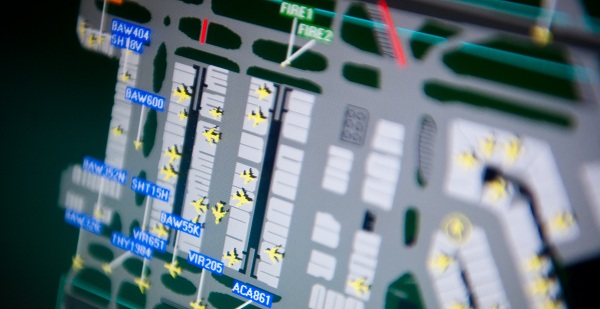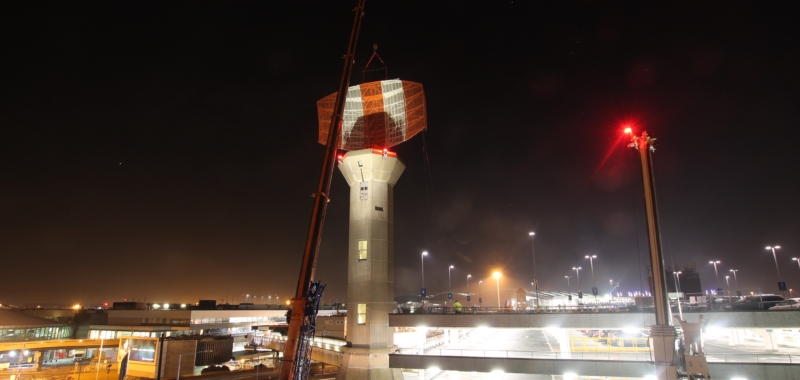Big Data and managing airport capacity
26 January 2015Earlier this month, it was announced that Vietnam Airlines will be moving its operation from Gatwick to Heathrow in order to launch a new direct service in March.
The move has been made possible because of the creation of two new arrival slots at Heathrow.
New slots at Heathrow are famously rare and can be traded for millions of pounds, so given it is already the busiest two-runway airport in the world, operating close to 100% capacity on a daily basis, how did space for a new slot emerge?
The answer lies in combining advanced modelling techniques with the ability to make sense of a huge amount of operational data in what we’re calling Strategic Airport Capacity Management (ACM).

Vietnam Airlines will be operating from Heathrow in March thanks to a new arrival slot. Photo by Long Ethan. Licensed under CC BY-SA 4.0 via Wikimedia Commons
The Heathrow operation is always busy, and there are countless factors which can affect the performance of the airfield at any given time. These can range from the way that the scheduled traffic arrives at the airport, and the local weather conditions, to infrastructure constraints like the numbers of available stands and taxiway closures. The ability to identify and quantify any potential benefits to the operation in any of these areas is vital, and the Strategic ACM capability allows Heathrow to do just that.
The toolset itself provides Heathrow’s analysts online access to two main areas; the ability to make use of a variety of simulation tools and a large historical dataset. This provides them with the ability to run “what if?” simulations to assess the effects of changing the traffic, infrastructure, weather or operational environment, to understand the overall affect it will have on the airfield. It also allows them to learn from past performance through analysis of key airfield metrics, which have been derived from large historical data sets.
Together, they enable Heathrow to make robust, consistent and quick business decisions about detailed and complex problems. Direct comparisons can be made to the current airport operation; in order to understand and quantify the likely benefits of any proposed operational change, or a combined program of initiatives. This is vital when considering long-term strategic investments, to ensure that future efforts are focused on achieving the maximum benefit for all stakeholders at the airport.
Analytical support from NATS’ Operational Analysis simulation and data experts is also a fundamental part of the capability, working collaboratively with Heathrow in order to provide additional context or exploration where required. I have had the opportunity to be closely involved throughout the implementation of Strategic ACM at Heathrow, by working a couple of days a week at Heathrow’s Compass Centre office.
Once logged-in to the Strategic ACM platform, a user can run a new simulation, by making a series of choices about what they want to analyse, based upon the specific question they’re trying to answer. Once completed, the system will present a series of outputs showing the results from their requested simulation, for example airfield delays, which they can then compare to any other previously run simulation saved in the simulation library. Depending on the detail of the simulation they’ve run – and within Strategic ACM there are three different tools available – different performance metrics will be output displaying the results appropriate for each analysis.
The design of the new toolset itself makes the capability both flexible and adaptable, and most importantly future proof. As the challenges faced by the airport change over time, so can the analytical components, ensuring that the focus is always on the relevant questions being asked at the time.
For example, as different airspace changes are introduced in the future, the impact that they will have on the airfield can be accurately modelled and understood. Similarly, modifications to the taxiway or stand infrastructure – like the opening of Terminal 2 last year – can be simulated in order to quantify the likely effect to the ground operation. And as future schedules become available, they too can be quickly analysed in a consistent and comparable manner, so that an optimal version can be agreed by all stakeholders.
Whilst the toolset has only been available for a few months, it has already provided significant benefit to the airport. Value from the new analytical capability has already been realised in several different areas, as well as the new long haul arrival slot for Vietnam Airlines.
For instance, the new tool has also enabled a complete revamp of the Runway Scheduling Limits process; the speed of one of the three simulation tools allows changes to the schedule to be assessed within seconds, rather than days and weeks, as was the case in the past. This has meant that potential improvements to next season’s schedule can now be reviewed and implemented at several different times of the year, around the IATA scheduling timeline, providing benefit to the airport, airlines and passengers alike.
There are certain to be many more examples of how the new toolset is benefiting the airport over the coming months. And as a web based service, the Strategic ACM capability is something that can be integrated relatively easily into any other airport around the world.
When we consider the capacity constraints that exist, particularly in the Middle East and Asia, this is an exciting prospect.
Comments
Please respect our commenting policy and guidelines when posting on this website.







29.01.2015
08:35
R Faith
Someone needs to swap the usage of “affect” and “effect” – for maximum effect, of course.